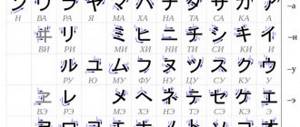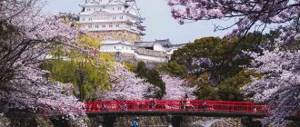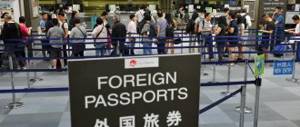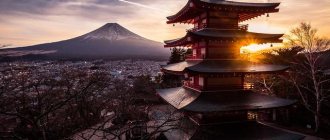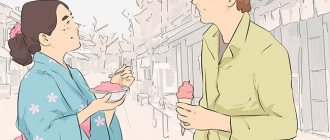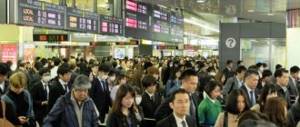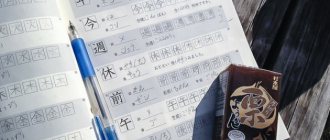August 20th, 2021 3 comments. »
Quite often, among those who decide to visit the Land of the Rising Sun for the first time, the question arises about what currency to take with them to Japan and whether it is possible to pay in dollars in Japan. The question is legitimate and at the same time simple. I will explain it.
History of the yen and features of the currency
The yen is considered one of the youngest currencies. Its development began from the moment the first samples were minted at the end of the 19th century. In 1871, it became the main one in Japan, replacing the old one, which had been produced since the 16th century. The complete transition to the yen took place in 1878. This is a very important achievement, since until this point money from various materials, both from the central government and from individual principalities, was circulating simultaneously throughout the country.
Due to the serious economic crisis that occurred in 1927, caused by the large volume of printed Japanese yen, the country's central bank had to introduce a new banknote. Its denomination was 200 yen, and the main feature was a blank reverse side. In 1932, gold coins were finally withdrawn from circulation.
Since 1933, backing the yen with gold fades into the background and ceases to directly influence the exchange rate. After 6 years, it is reoriented to the American currency. At that moment, the yen exchange rate to the US dollar was 4. However, after the war, its predictable fall occurred by almost 3 times, then even stronger and more rapidly. The situation stabilized only with General MacArthur coming to power, but at that time 360 yen was given for 1 dollar.
In 1973, the yen lost its dependence on the dollar and began to be considered a freely circulating currency. Then periodically there were fluctuations in the stock exchange, bankruptcy of various financial structures, and economic crises. Only in 2002 did the situation relatively stabilize, the yen began to strengthen, and the flow of investment into the country increased. At the same time, Japan itself is not too interested in the exchange rate between the yen and other currencies being high, since the state’s economy is export-oriented
Internet.
There is a great opportunity to stay in touch by renting a router with Wi-Fi
.
You can use an international SIM card
, connecting to the mobile Internet when needed.
We have it installed as a second SIM card in our smartphone
, which we use as a navigator, camera, video camera and, of course, a telephone.
During the entire trip, we never turned on the mobile Internet, because there are many points with free Wi-Fi in Japan. How do we find them? We were advised by the owner of one of the ryokans where we stayed. Need to download the Japan Wi-Fi app
. Register for it while still at home. In Japan, use it when you need free internet.
If there is no network at the time of connection, go to where there are shops.
Appearance of the yen
Japanese yen depict a variety of figures from politics, literature and science. On the reverse side are drawn: Mount Fuji, a painting by the famous 17th century artist Ogata Korin, illustrations from stories, as well as a phoenix bird.
Some of the banknotes in circulation come in several variants. For example, the 1000 yen banknote may depict the first prime minister or one of the famous writers, Natsume Soseki. On the back is either the Bank of Japan or a traditional oriental landscape.
There are also some images on the coins. In addition, they are minted from various materials. Thus, the 1 yen coin is made of aluminum and has a tree sapling on its obverse. The 5 yen coin has a hole in the middle, is bronze, and has an ear of rice on it.
Since 2008, the country has also issued commemorative coins dedicated to Japanese prefectures.
Excursion programs
Local agencies offer many programs, so if you are searching on your own, here are the most popular ones:
- Tokyo in one day. Price from 20,000 rub. Of course, you won’t get around all the delights of the metropolis in one day, but you will see the calling cards of the city.
- Night Tokyo. The program includes observation decks with panoramic views of the city, skyscrapers, and nightlife.
- Mount Fuji. From $350 (also about 20,000 rubles).
- Tour trips from city to city. For example, Tokyo - Kyoto, Nara - Osaka, Kamakura - Yokohama, etc. (price depends on the number of people in the group).
- Other places to visit: national parks (Nikko, Hakone, etc.), temples, amusement parks, show programs.
Currency exchange in Japan
A tourist can exchange money in Japan in different places: special points, banks or at a post office. The rate at the airport and at a branch of a credit institution, of course, is different. At the same time, certain inconveniences may arise due to the fact that banks operate on a special schedule that is not very familiar to Russian tourists: from 9 a.m. to 3 p.m. It is also not always possible to find the exchange rate; it is customary to ask about it directly at the cash desk. And since it is preferable to communicate in Japanese, the likelihood of misunderstandings is high.
Sometimes you can buy yen in hotels, but the exchange rate there cannot be considered favorable. In addition, hotels usually have limited funds, so it will not be possible to purchase large sums. Some people prefer to use the services of exchange offices. The main problem is that without knowledge of hieroglyphs, identifying them is quite difficult, and sometimes almost impossible. Also, you can exchange rubles for yen only at 2-3 points located in the capital of Japan - Tokyo.
Insurance
Insurance for a trip to Japan is not a mandatory condition when applying for a visa, but it is still better to take insurance and the cheaper the better. But I recommend registering it, because... This will at least somehow protect you from big expenses in case something very serious happens. Because Medicine is very expensive in Japan .
I don’t advise you to take the most expensive one and add a bunch of unnecessary options, but only the one that covers the most terrible insurance events. And now I will explain why.
Many people think that by taking “our” insurance you will be able to see doctors for free in Japan, because Insurers will pay for all this, or there will be a discount. Nothing like this! You will pay 100% of the required amount and the insurance will not cover anything for you, because... one must read carefully what they cover.
And even if your case is covered by insurance, you will have to pay out of your own pocket, having previously agreed with the insurance company, and then, when you return, run around and prove it with documents.
Moreover, it would be nice to take a deductible, thereby significantly reducing your insurance costs. In short, this is the amount that you will pay yourself no matter what happens. You can safely take a deductible of $400-500, thereby significantly reducing the amount of insurance. You can calculate how profitable this is in insurance calculators.
My health is quite poor and believe me, I know what I’m talking about. Here I wanted to tell you the details, but I decided not to increase the timing of the video, so it’s better to carefully google this topic before your trip. But I can say that it is easier and cheaper to pay for everything yourself, unless you actually have an insured event for several thousand dollars.
Therefore, if you really want to take out some advanced insurance, be sure to study all the nuances yourself.
What money to take to Japan
Tourists are advised to carry Japanese currency, i.e. yen. You can buy them in Russia at Sberbank. If the currency is not available at the moment, it can be ordered and received after a few days (usually from 3 to 5). This is much more profitable than going through double conversion through dollars or euros.
As mentioned above, it is almost impossible to exchange rubles for yen directly in Japan. In addition, communication with bank employees is made difficult by the language barrier. It is also worth understanding that it is impossible to get money in Japan by exchanging it on the street.
Payment by cards has become widespread, but not all ATMs issue yen on cards issued in foreign countries. Hotels, for example, usually deal exclusively with Japanese currency.
Thus, the yen is one of the world's main reserve currencies. It is actively used in the land of the rising sun. For this reason, travelers planning a trip there should take care of currency exchange. This can be done either at the airport upon arrival or in your own country. Usually the second option is more profitable.
Food prices
© maureen_aee / flickr.com / CC BY 2.0
At home, we have such queues at Japanese restaurants that when you find yourself within walking distance of fresh seafood, you want to try everything. In any area of Tokyo, Kyoto, Osaka, etc., decent establishments and small street food stalls are plentiful. And here I will please you again! Food in Japan is inexpensive. By the way, the Japanese are very careful about the quality of their products, so you can try even the most exotic seafood dishes.
A hearty dinner in a regular restaurant costs about 1000-2000 rubles. For two! Let me clarify right away that I am not taking high-level restaurants into account. During your entire vacation you can sit there 1-2 times at most. In city markets and shopping centers you can eat on a budget. The portions are large, you can walk all day and not think about food until late in the evening. I foresee the question: how much do the rolls cost? Perhaps this is the most inexpensive dish in Japan - from 62 rubles. (for 2 pcs.).
If you think that by shopping in supermarkets you save money, this is not a fact! Expect that a basket of groceries will cost you the same price as in your hometown:
Average food prices in Japan
| Products | Yen | Rubles |
| Milk (1l) | 183.36 ¥ | 107.47 RUR |
| Loaf of bread (500g) | 194.43 ¥ | 113.96 RUR |
| White rice (1kg) | 459.47 ¥ | 269.30 RUR |
| Eggs (12 pcs) | 223.85 ¥ | 131.20 RUR |
| Local cheese (1kg) | 1,751.38 ¥ | RUB 1,026.52 |
| Chicken fillet (1kg) | 773.66 ¥ | 453.46 RUR |
| Beef (1kg) | 2,132.97 ¥ | RUB 1,250.17 |
| Apples (1kg) | 754.81 ¥ | 442.41 RUR |
| Bananas (1kg) | 305.68 ¥ | 179.16 RUR |
| Oranges (1kg) | 544.79 ¥ | RUR 319.31 |
| Tomato (1kg) | 650.70 ¥ | RUB 381.39 |
| Potatoes (1kg) | 407.10 ¥ | 238.61 RUR |
| Onion (1kg) | 334.53 ¥ | 196.07 RUR |
| Salad (1 bunch) | 205.59 ¥ | 120.50 RUR |
| Water (1.5l) | 128.92 ¥ | 75.56 RUR |
| A bottle of wine | 1,200.00 ¥ | 703.34 RUR |
| Local beer (0.5l) | 253.00 ¥ | 148.29 RUR |
| Imported beer (0.33l) | 333.86 ¥ | 195.68 RUR |
| Pack of Marlboro cigarettes | 470.00 ¥ | 275.48 RUR |
Information for travelers
The foreign exchange (forex) market offers another option for traders looking to buy or sell the Japanese yen. By using one currency to purchase another currency in a highly leveraged situation (such as 50:1 or more), traders can realize profits when the purchased currency increases in value relative to the currency used to make the purchase. The Japanese Yen is most often traded against the US Dollar in a currency pair known as USD/JPY.
But before trading these markets, international investors should be aware that the leverage involved often comes with greater risk.
These trades are also usually placed in specialized forex brokerage accounts, which may be different from existing brokerage accounts.
- The Japanese yen has historically been popular among international investors as a safe haven, trade and currency hedge.
- The easiest way to attract foreign investors to the Japanese yen is through Japanese ETFs.
- The spot forex market offers another option, but it is a little riskier than others using ETFs.
- Types of listing agreements for selling a home
- All about metal roof rack
- High Pressure Gas Line: Know the Types Before You Dig
- Types of Newspaper Articles for Freelancer
- Where are your clients? The end of your supply chain?
- Where to get money orders. Buying Tips
- Get a free coffee garden for your garden
- Find out where all your money is going and fix budget leaks
- How did the name Blue Chip Stocks come about?
Modern banknotes and coins
Japan currently issues banknotes in four denominations: 1000, 2000, 5000 and 10,000 yen. You can find out what the corresponding banknote looks like below.
- 1000 yen.
The front side depicts the Fukushima-born bacteriologist Noguchi Hideyo, born in 1876. He researched yellow fever in Africa, contracted the disease and died in 1928 at the age of 54.
The reverse side is a view of Mount Fuji and a branch of cherry blossoms.
- 2000 yen.
The obverse depicts the gate of Shurijo Castle (Okinawa). On the reverse side, at the bottom right, there is a stylized portrait of the writer Murasaki Shikibu, who lived only 48 years (978 - 1016) and created a masterpiece of Japanese classical literature, The Tale of Genji. Banknotes of this denomination are now less common than others, since their issue has been suspended.
- 5000 yen.
On the front side there is an image of one of the greatest Japanese writers of the late 19th century, Huguchi Ichie. She was born in 1872 and died of tuberculosis at the age of 24. Khuguti Itie's fame was brought to him by the stories “Muddy Stream” and “Peers”. On the reverse side of the banknote there is a fragment of a painting of a 6-leaf screen by the medieval artist Ogata Korin.
- 10,000 yen.
The obverse of the banknote contains the image of the philosopher and educator Fukuzawa Yukichi (1835–1901). His treatise “On the Benefits of Science” brought him fame. In addition, Fukuzawa is considered to be the founder of the prestigious private Keio University. On the reverse of the banknote you can see the mythological Phoenix bird, traditionally revered as a harbinger of happiness.
The security features of Japanese paper money meet the highest international standards. They include everything that has been invented by man in this field to date, from holograms and watermarks to microprinting and luminescent inks.
In Japan, coins of various denominations are also in circulation. Their image is presented.
The Japanese highly valued the art of coin making. For example, they were the first in the world to come up with such a trick: if you look at the zeros of the 500 yen coin from a certain angle, you can see a hidden image.

